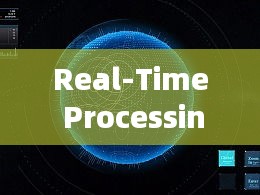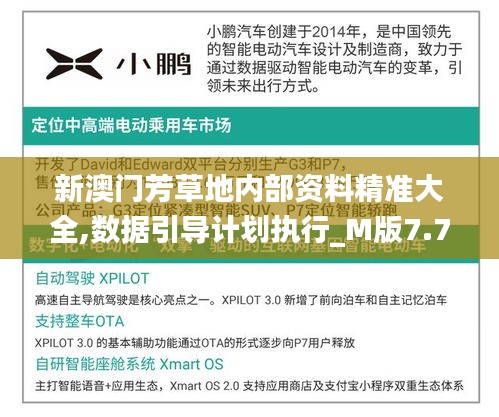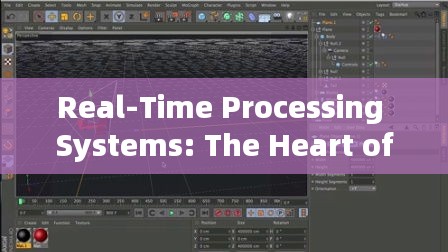Real-Time Processing Systems: The Heart of Modern Data-Driven Operations
Real-Time Processing Systems: The Heart of Modern Data-Driven Operations
Introduction to Real-Time Processing Systems
Real-time processing systems are a cornerstone of modern data-driven operations. These systems are designed to handle data as it is generated, ensuring that the processing occurs in a timely manner, often within milliseconds or microseconds. Unlike batch processing systems that process data in chunks at scheduled intervals, real-time systems are essential for applications that require immediate response and analysis, such as financial transactions, industrial automation, and telecommunications.
At the core of a real-time processing system is the ability to process data streams continuously and efficiently. This requires specialized hardware and software components that can handle high volumes of data with low latency. Real-time systems are often used in scenarios where decisions need to be made quickly and accurately, based on the most current data available.
Key Components of Real-Time Processing Systems
A real-time processing system typically consists of several key components, each playing a crucial role in the overall performance and functionality.
Input Data Streams
The first component is the input data streams, which are the sources of data that the system processes. These streams can come from various sources, including sensors, network devices, and databases. The data is usually in a raw format and needs to be filtered and pre-processed before it can be analyzed.
Data Filters and Pre-Processors
Filters and pre-processors are used to clean and format the incoming data. This step is critical to ensure that the data is in the correct format and quality for further processing. Data filtering can involve removing noise, correcting errors, and normalizing the data to a standard format.
Processing Engine
The processing engine is the heart of the real-time system. It is responsible for executing the algorithms and logic that analyze the data. The processing engine must be highly optimized to handle the high throughput and low latency requirements of real-time applications. Techniques such as parallel processing and distributed computing are often employed to achieve this.
Output Systems
Once the data has been processed, the results need to be outputted to the appropriate systems. This can include displaying the results on a dashboard, sending alerts to stakeholders, or integrating the data into other systems for further analysis.
Applications of Real-Time Processing Systems
Real-time processing systems find applications in a wide range of industries and sectors.
Financial Services
In the financial industry, real-time processing systems are critical for high-frequency trading, fraud detection, and risk management. These systems enable banks and financial institutions to process transactions in real-time, ensuring that they can respond quickly to market changes and potential threats.
Healthcare
In healthcare, real-time processing systems are used for monitoring patient vital signs, managing medical equipment, and processing medical images. These systems help healthcare providers make timely decisions that can impact patient outcomes significantly.
Manufacturing and Industrial Automation
Real-time systems are also integral to the manufacturing and industrial automation sectors. They enable the monitoring and control of production lines, predictive maintenance of machinery, and the optimization of manufacturing processes.
Telecommunications
In telecommunications, real-time processing systems are used for network management, traffic routing, and customer service. These systems ensure that network operations are efficient and that customers receive the best possible service.
Challenges and Considerations
Despite the numerous benefits of real-time processing systems, there are several challenges and considerations that need to be addressed.
Scalability
Scalability is a significant challenge, as real-time systems need to handle increasing volumes of data without compromising performance. This requires careful system design and the use of scalable technologies.
Latency
Latency is another critical factor. Real-time systems must process data with minimal delay to be effective. Achieving this requires specialized hardware and software solutions that can handle high-speed data processing.
Reliability
Reliability is paramount in real-time systems, as failures can have serious consequences. Redundancy and failover mechanisms are essential to ensure that the system remains operational even in the event of a hardware or software failure.
Conclusion
Real-time processing systems are indispensable in today's data-driven world. They enable organizations to make informed decisions quickly and efficiently, leading to improved operational performance and customer satisfaction. As technology continues to evolve, the capabilities of real-time systems will only grow, making them an even more critical component of modern data processing.
The Rise and Fall of Hot Products: Understanding the Ephemeral Trend in Consumer Goods
Unlocking the Power of Real-Time Events: Engaging Audiences in the Moment
Summer's Hottest Foods: A Culinary Journey Through the Warmest Months
The Latest Real-Time Policy Updates: A Comprehensive Overview
Navigating the English Language Trending Topics Chart: A Comprehensive Guide
Navigating the Art of Writing "Real-Time Progress" in English
The Rise of Electric Vehicles: A Game-Changer in the Automotive Industry
Navigating the Dynamic World of Real-Time Pricing: Strategies and Implications












 蜀ICP备08106559号-1
蜀ICP备08106559号-1